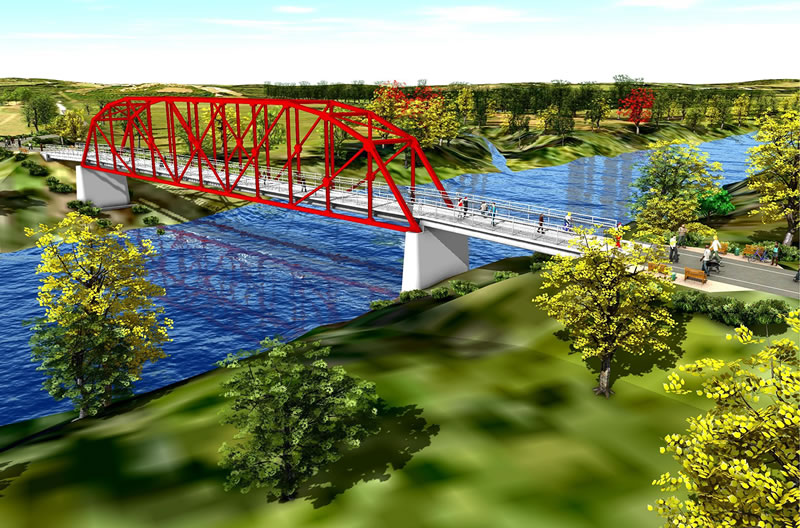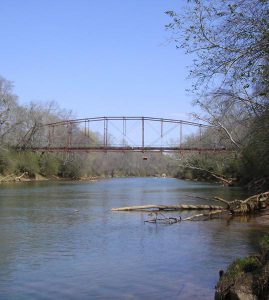This is a proposed conception for a new pedestrian bridge at Rogers Bridge Park. Duluth is working with other governments on this proposal.By Elliott Brack, editor and publisher | Good government doesn’t come easily. People have to work at it.
 It’s been thrilling to me recently to learn more about several Gwinnett municipal governments and their plans for the future. We’ve written about some cities, including a capsule compilation of what several of the governments are up to. (GwinnettForum, May 19, 2017).
It’s been thrilling to me recently to learn more about several Gwinnett municipal governments and their plans for the future. We’ve written about some cities, including a capsule compilation of what several of the governments are up to. (GwinnettForum, May 19, 2017).
Here’s why Duluth is making such terrific progress now. It all started in 2009, as the city had little monies to spend on improvements. Mayor Nancy Harris says that after the recent recession, “We didn’t do much spending on public works; we had to hold on to what we had, and make sure we didn’t lay anyone off.”
So, what happened? “We did a lot of studying of what was happening in other cities. After a Robert Brooks webinar, we visited other cities. Brooks had researched 400 towns and cities across the U.S. and Canada, trying to figure out the characteristics of successful cities.”
From that came a Duluth “10-10-10 Plan.” It means that Duluth wanted to see in its downtown area:
- 10 places that served food within three lineal blocks.
- 10 destination retail shops.
- 10 places that were open after 6 p.m., preferably entertainment areas.
The mayor continues: “We wanted an authentic downtown, a real place to gather. We also worked hard to get our staff working toward that vision, from people in the City Hall to public works and police. Let me credit our city manager, James Riker, who was a real mover and shaker and team player on working with the staff.”
The city also learned a big lesson. “If a city invests in its own infrastructure, the sidewalks, street lights, roads, signage, trash recycling….then it’ll see the private businesses start to pay attention to the city, and will follow with investment.”
And what has happened? Look at this list of accomplishments in three categories:
Capital Projects: Main Street parking; Georgia Highway 120 realignment, and Main Street improvements.
Art and Music as a Brand: Red Clay Music Foundry; Public Art Master Plan; Downtown Events.
Citywide Developments: Sugarloaf Marketplace (14.9 acres); Marketplace Village (15 acres) in planning stage; Glens at Sugarloaf (10.43 acres), Rivers Edge at Abbots Bridge (19 acres).
New wrinkle: The city invested $1,200 in a drone camera to capture bird’s eye photographic scenes all around Duluth. This fits beautifully in with a slide presentation the mayor shows to those interested.
And what’s coming: A total of 186,000 square feet of retail space; some 1,271 new residential units, including 229 single family attached; 213 single family detached; and 702 multifamily units, including 128 senior focused multifamily units. (Of the total new residential units, 505 are within downtown, and 767 are outside of downtown, principally in the Sugarloaf-Peachtree Industrial Boulevard area.)
What does all this mean?
That the Duluth downtown revitalization plan is working beautifully. And that new development and redevelopment opportunities still exist in Duluth.
Put it another way: the dollar figure associated with all this activity in Duluth?
Economic Development Manager Chris McGee says that the total dollar value in downtown amounts to $127 million, with the overall total for all of the city at $300 million in new investment.
Mayor Harris puts it slyly: “Yes, that says we are truly open for business.”
It’s beautiful to see such careful, detailed long-term planning, cooperation and hard work come together for the benefit of Duluth citizens.
Attaway, Duluth!
- Have a comment? Send to: elliott@brack.net











Follow Us